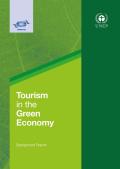This report reviews the economic and environmental consequences of resource inefficiency in Asia and the Pacific and some of its underlying causes. It examines a range of technical, policy, and institutional responses to encourage corporations and consumers alike to adopt more resource-efficient behaviors, with particular attention to the vital role governments must play in creating incentive structures, encouraging research and development for new technologies, improving institutions and information exchange, and other measures to move the region’s economies toward greater resource efficiency. This analysis is a contribution to the global G8 3R Initiative, which seeks to promote the “reduce, reuse, recycle” approach to waste management. While many of the specific strategies described are not new, the report should contribute to an understanding of the underlying reasons behind resource inefficiency, tools for its analysis, and specific interventions tailored to the Asia and Pacific context.
The report includes case studies from China, India, Japan, Lao, Nepal, Philippines and Thailand.
Half of the world’s population — 3 billion people — lives below the poverty line, and Asia has the largest share. In pursuit of sustainable economic development and poverty alleviation, there is great potential among low-income households for green consumption, production, innovation, and entrepreneurial activity. This paper shows how an inclusive green growth model can uplift the poor through entrepreneurship and fiscal policy reforms. To make the case, this paper cites examples of institutions and policies in Asia that have successfully generated and tapped into the potentials of low-income households. Low-income households are recognised as resilient, value-conscious consumers and creative entrepreneurs in the inclusive and green growth paradigm. Low-income households can be the engine of a new development strategy; they can be a source of innovation for providing basic services in a green way. Evidence suggests that, without effective financial systems, not all market actors can sustain their businesses.
This report contains the first publication of data and indicators that can serve as a basis to analyse and address important policy issues such as resource scarcity and resource security and the design of resource-efficient (industrial) development policies. As the applied methods are consistent with, and fulfil international standards of material flow accounting, the results presented allow comparisons between countries and provide the basis for developing policy targets of all Asian countries.
This pilot study presents comparative data for the following 19 Asian countries: Bahrain, Bangladesh, China, India, Indonesia, Israel, Japan, Jordan, Malaysia, Oman, Pakistan, Philippines, Qatar, Rep. of Korea, Saudi Arabia, Singapore, Sri Lanka, Thailand and Turkey. These countries together represent more than 20% of world GDP and more than 90% of GDP in Asia (excluding Russia and other former countries of the Soviet Union).

This report was launched at the first Global Human Development Forum which brought together high-level experts from governments, corporations, civil society and international organizations to examine the global policy changes required to ensure a sustainable future for people today and for generations to come. The report, supported by 13 U.N. agencies, calls for a transformation to integrated policy making, where social equity, economic growth and environmental protection are approached together. It is a contribution of governments, experts, researchers and development practitioners ahead of the ‘Rio+20’ U.N. Conference on Sustainable Development in June in Brazil where participants will come together to discuss and shape new policies and measures to promote prosperity, reduce poverty and advance social equity and environmental protection.
